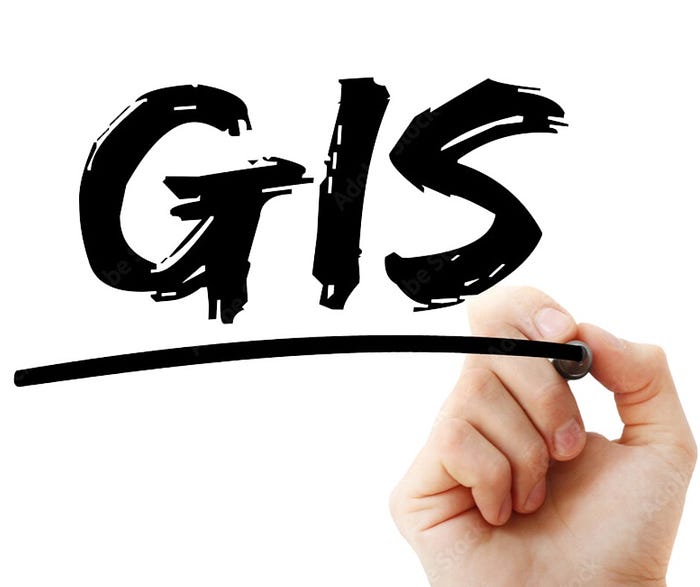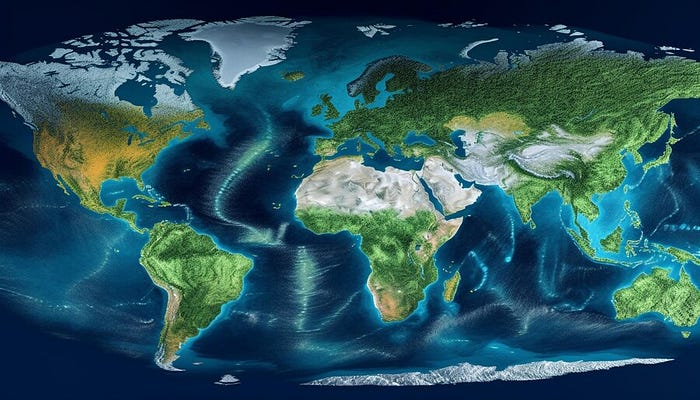Geographic Information System (GIS) Applications: Mapping the World
In our ever-connected world, the power of location-based information cannot be overstated. Geographic Information Systems (GIS) are the backbone of this revolution, providing a versatile platform for capturing, storing, managing, analyzing, and visualizing spatial data. From urban planning to military intelligence and everything in between, GIS plays a pivotal role in understanding and harnessing the geography of our planet.
GIS (Geographic Information System)
A Geographic Information System, or GIS, is a robust software system designed to capture, store, manage, analyze, and visualize spatial or geographic data. It serves as a vital tool for individuals and organizations to make informed decisions by interpreting patterns, relationships, and trends within geographical information. Before diving into the applications of GIS, let’s first understand what GIS is. At its core, GIS is a technology that combines geography, data, and computer science to help us capture, manage, analyze, and visualize geographic information. It allows us to see, interpret, and understand data in a way that reveals patterns, trends, and relationships in the world around us.

Areas of Use:
- Urban Planning and Development:
GIS plays a pivotal role in urban planning and development. Cities and municipalities use GIS to manage infrastructure, plan transportation networks, and make land-use decisions. By integrating data on population growth, traffic patterns, and public services, urban planners can create more sustainable, efficient, and livable cities. GIS is integral in urban development, helping city planners optimize infrastructure, manage land use, and improve the quality of life for urban residents.
- Environmental Management and Conservation:
One of the most significant applications of GIS is in environmental conservation. GIS is used to monitor ecosystems, track deforestation, manage wildlife populations, and plan protected areas. Conservationists can overlay various datasets, such as satellite imagery, species distributions, and climate data, to make informed decisions about where to focus their efforts. Environmentalists and conservationists employ GIS to monitor ecosystems, track wildlife populations, and protect natural habitats.
- Emergency Response and Disaster Management:
GIS is a crucial tool in emergency management. During natural disasters, such as hurricanes, wildfires, or earthquakes, GIS helps track the impact, plan evacuation routes, and allocate resources effectively. It also aids in post-disaster recovery efforts, helping organizations pinpoint areas in need of assistance. During disasters, GIS aids in resource allocation, risk assessment, and rapid response coordination.
- Agriculture and Crop Management:
Precision agriculture is a rapidly growing field that relies on GIS. Farmers use GIS to analyze soil quality, plan crop rotations, and optimize irrigation. This technology is revolutionizing agriculture, increasing yields, and minimizing environmental impact Farmers use GIS for precision farming, optimizing crop yields through accurate soil and weather data.
- Public Health and Epidemiology:
In the healthcare sector, GIS is used for epidemiology, disease tracking, and healthcare planning. GIS can help identify disease hotspots, optimize hospital locations, and analyze health trends. In the context of the COVID-19 pandemic, GIS played a vital role in tracking the spread of the virus and distributing vaccines. Disease outbreaks and healthcare planning benefit from GIS by tracking the spread of diseases and assessing healthcare resource allocation.
- Transportation and Logistics:
GIS is indispensable in transportation and logistics. Whether it’s optimizing delivery routes, managing public transportation systems, or tracking the movement of goods, GIS ensures that the wheels of our interconnected world keep turning efficiently GIS enhances logistics, optimizing routes for transportation, managing traffic, and ensuring efficient supply chain operations.
- Archaeology and Cultural Heritage Preservation:
GIS has revolutionized archaeology and cultural heritage preservation. Archaeologists use GIS to map excavation sites, record artifacts, and study ancient landscapes. It aids in the preservation and restoration of historical sites and helps experts make informed decisions about excavation and preservation. Archaeologists employ GIS to locate and preserve historical sites and artifacts.
- Real Estate and Property Management:
The real estate industry benefits from GIS in property valuation, site selection, and market analysis. It allows real estate professionals to visualize property data, assess trends, and make informed investment decisions. GIS aids in property assessment, land valuation, and urban land management.

Remote Sensing
Remote sensing involves collecting data about the Earth’s surface from a distance using satellites, aircraft, drones, or sensors. It provides valuable information for GIS applications.
· Earth Observation and Environmental Monitoring: Remote sensing is crucial for tracking climate change, monitoring deforestation, and observing natural disasters.
· Agriculture and Forestry Management: Farmers and foresters use remote sensing data to optimize land use, track crop health, and manage forests.
· Land Use and Land Cover Mapping: It is instrumental in urban planning and environmental protection by assessing land use changes.
· Disaster Assessment and Response: Remote sensing provides real-time data for disaster response and recovery.
· Infrastructure Monitoring and Assessment: Engineers use it to monitor critical infrastructure, like bridges and pipelines.
Spatial Analysis:
Spatial analysis is the process of harnessing the power of Geographic Information Systems (GIS) to extract valuable insights from spatial data. It plays a crucial role in various fields, enabling the exploration of patterns, trends, and relationships within geographic information.
In law enforcement, spatial analysis aids in crime mapping and analysis, helping predict crime hotspots and allocate resources more effectively. Businesses leverage GIS for retail site selection and market analysis, ensuring optimal store placement based on location-based research. Transportation networks benefit from spatial analysis by optimizing traffic flow, public transportation routes, and logistics networks, ultimately improving efficiency.
In the realm of ecology, spatial analysis is used to study animal habitats and ecological patterns, assisting biologists in conservation efforts. Health organizations employ GIS for disease spread modeling, as seen during the COVID-19 pandemic, to track and respond to outbreaks. Governments utilize spatial analysis for natural resource allocation, allocating land and water resources for various uses, and fostering sustainable development. Overall, spatial analysis is a versatile tool that enhances decision-making across numerous sectors.
Cartography:
Cartographic Theory: suggests that mapmaking is both an art and a science, blending design principles with geographic data. It emphasizes the importance of effective communication in conveying spatial information. Cartography’s multifaceted applications underscore its significance: in navigation, it aids travelers in wayfinding; in data visualization, it enables the simplification of complex information through thematic maps; in education, it compiles a comprehensive global perspective in atlases; and in tailored mapping, it serves diverse industries’ specific needs. This theory recognizes that maps are not mere representations but powerful tools that bridge the gap between geography and human understanding, enriching our perception of the world.
Geodatabase:
A geodatabase is a dedicated database tailored for the storage, administration, and analysis of geographic data. It serves as the backbone of Geographic Information Systems (GIS) by efficiently organizing various data layers and their intricate relationships. This specialized database is pivotal in the GIS realm for several key reasons. Firstly, it excels in storing and managing GIS data layers, ensuring quick data retrieval and unwavering integrity. Secondly, it upholds data consistency, a fundamental aspect for precise GIS analysis and informed decision-making. Moreover, geodatabases facilitate version control, allowing multiple collaborators to seamlessly contribute to GIS projects while maintaining a comprehensive history of data revisions.
Geographic Information Systems are revolutionizing how we interact with and understand the world. From military intelligence to urban planning, environmental conservation to disaster response, the applications of GIS are vast and impactful. As technology continues to evolve, GIS will play an increasingly vital role in decision-making and understanding the intricate spatial relationships of our world.


Comments
Post a Comment